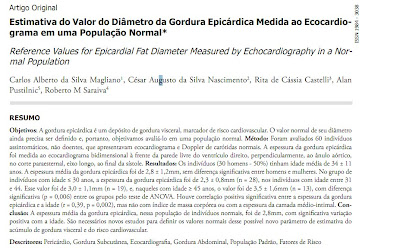
Excelente surpresa na enquete de aparelhos novos!
A maioria está interessada em aparelhos avançados.
É esse o caminho! Nós ecocardiografista não podemos nos acomodar.
Aqui na Echotalk já absorvemos o Strain na rotina de exames e cursos, temos planos de 3D para breve, inclusive transesofágico e para o que mais de novo e bom for inventado.
Podem comprar que gente ensina a usar!!!
E para quem vai gastar mais de um milhão numa Tomografia, conselho:
- Gaste também mais uns 10% disso num bom aparelho de Eco que você não vai se arrepender!






































